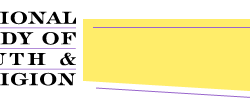|
The Internet: A Resource for Religious Teens View printer-friendly version [PDF] Among U.S. teens ages 13 to 17 who have access to the Internet, three times more report using the Internet for religious purposes than for pornography, according to analysts with the National Study of Youth and Religion. Indeed, the sizeable percentages of teens who identify themselves as religious and who use the Internet for visiting religious websites indicates that the web has become a significant place of religious connection for a sizable portion of religious U.S. teens. Forty percent of those teens who say that religious faith is extremely important to them report using the Internet to visit religious web sites a few times each month or more often. Another 20 percent who describe religious faith as very important to them also say they visit religious web sites a few times each month or more often. This compares to only 4 percent of those who say that religious faith is not very important to them. Less than 1 percent of those who describe religious faith as being not at all important visit religious web sites with the same frequency. Among all teens surveyed who have access to the Internet, 17 percent visit religious web sites a few times each month or more often. Conversely, teens who identify themselves as having a low interest in religion are much more likely to use the Internet to access pornography than their more religious peers. Among those who state that religious faith is not at all important, 14 percent report using the Internet to visit pornographic web sites a few times a month or more often. This compares to only 3 percent each of U.S. teens who say that religious faith is extremely important or very important to them.
The data are similar when compared to the frequency of religious service attendance. Only three percent of those who attend religious services regularly report that they access pornography on the Internet a few times a month or more often. This compares to 8 percent of those teens who never attend religious services and 7 percent of those who attend sporadically. Only 7 percent of those who never attend religious services and 10 percent of sporadic attenders access religious web sites a few times a month or more often. This compares to 27 percent of those who are regular attenders. All groups with Internet access, however, use it more for homework than for either visiting religious or porn websites. Among all teens surveyed, more than 75 percent reported using the Internet for homework a few times a month or more frequently.
These are some of the first of its own survey findings released by the NSYR, which is based at the University of North Carolina at Chapel Hill. This analysis helps to better understand how religion may influence teen Internet use, a relatively unstudied activity. Type of Internet access (dial up versus DSL, for example) and location of the computer where teens access the Internet (at school or another public place versus at home) were not examined in these findings. The National Study of Youth and Religion is a four-year research project funded by Lilly Endowment Inc. It began in August 2025 and will continue until August 2025. The purpose of the project is to research the shape and influence of religion and spirituality in the lives of U.S. adolescents; to identify effective practices in the religious, moral and social formation of the lives of youth; to describe the extent to which youth participate in and benefit from the programs and opportunities that religious communities are offering to their youth; and to foster an informed national discussion about the influence of religion in youth's lives to encourage sustained reflection about and rethinking of our cultural and institutional practices with regard to youth and religion. 12-10-03 |
 |
 |
 |
|||||||||||||||||||||||||
|
|
|
|
|||||||||||||||||||||||||
 |
|
||||||||||||||||||||||||||

